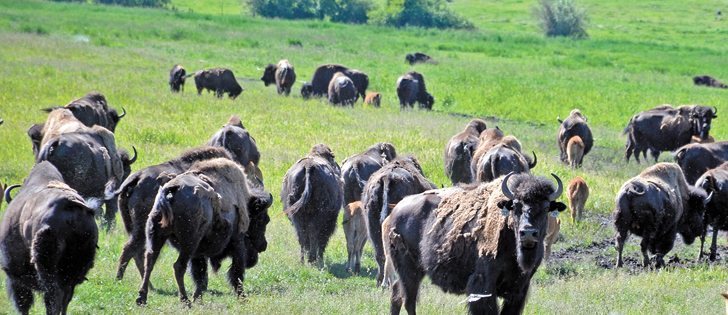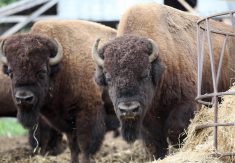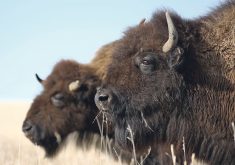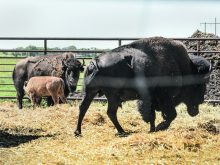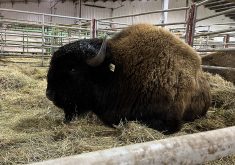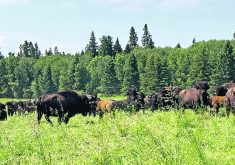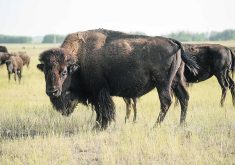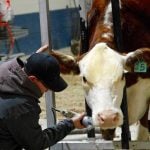Although bison that are grass fed produce meat that is higher in vitamins, the short growing season poses a challenge
CHASE, B.C. — Feeding bison can be a complicated business, a recent bison field tour near Chase, B.C., was told.
John Church, B.C. Innovation Chair in Cattle Industry Sustainability at Thompson Rivers University, said it can be challenging to deliver a consistent market weight animal with the nutritional attributes that consumers want.
“In my mind, the best bison meat you can get is a partially grain finished heifer coming up to 30 months,” Church said during the field day, which was part of the Canadian Bison Association’s annual general meeting.
Read Also
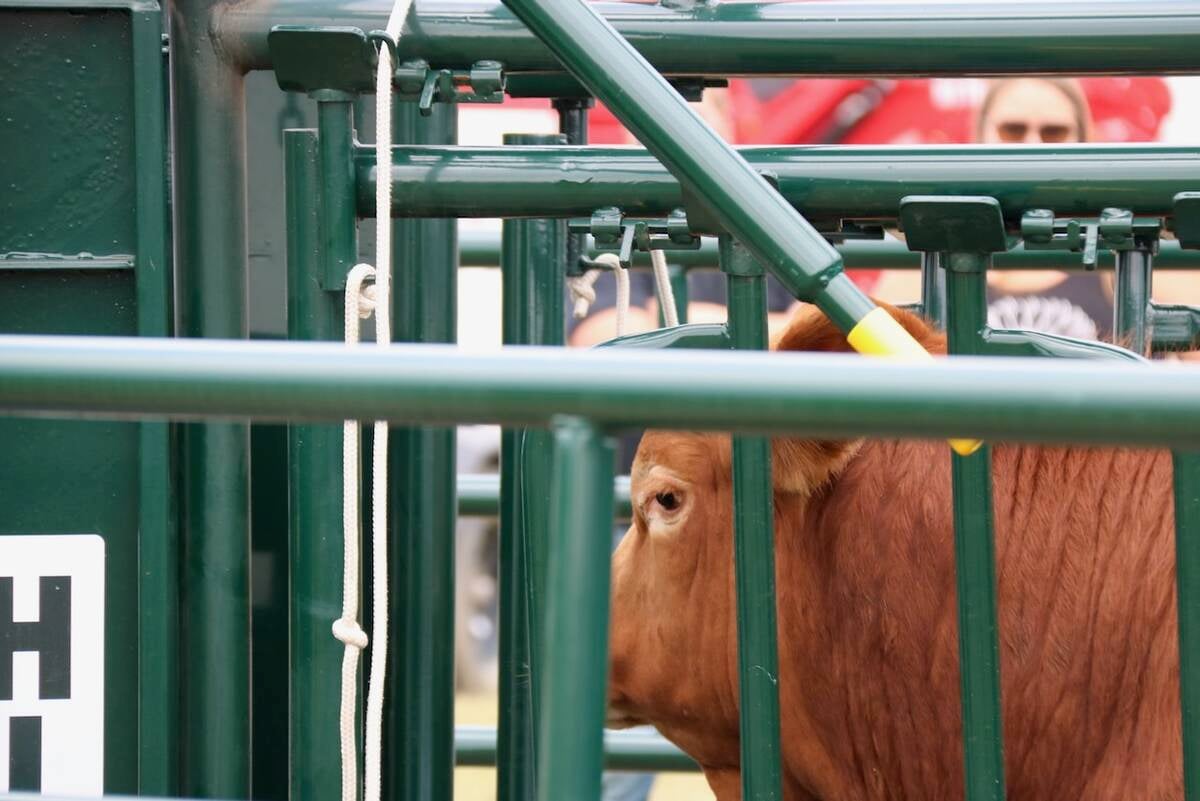
Good handling equipment a must on cattle operations
It’s important for the safety of producers and everyone else dealing with their stock that handling equipment is functional and safe.
“Up to two years it is as tender as beef, but over 30 months, the toughness goes up.… We know there are nutritional attributes that change whether they are grass fed or grain fed.… The vitamin content is typically much higher in grass fed than in grain finished meats, particularly vitamin A and vitamin E, and the fatty acid profile changes as well.”
However, there are significant challenges to grass finishing, given Canada’s relatively short growing season.
“You have to put them on forage,” said Church.
“You can do not too bad if you are on high quality forage, but if you are just trying to feed dry conserved hay, if you look at the TDN (total digestible nutrients), usually there isn’t enough energy to put a proper finish on the animals.”
Yet even in Ireland, where ranchers parlay a 300 day growing season and significant rainfall into a grass fed specialty beef industry, they have challenges.
“In Ireland they can get the fat and the marble and the flavour and the fatty acid balance, but they are finding in their slaughter plants only 60 percent of their carcasses are hitting the standards that they want,” he said in an interview.
“North American feedlots do an excellent job at finishing.… They’ve got it down to a fine science and grain rations make it consistent.”
Church said a recent study by PhD candidate Matthew Walpole from the University of Saskatchewan helps solve the issue.
“What we saw most significantly in the study comparing a high grain and a backgrounding ration was that the bison produced just as well on the backgrounding ration that had considerably higher forage than on a typical beef feedlot grain finishing ration,” he said.
“One thing that is very interesting to me is that finishing diets dramatically change the ratio between omega 6 and omega 3 fatty acids.… Nutritionists talk about the magic ratio being below four to one.”
The best grass fed beef tends to have a ratio of two to one omega 6 to omega 3, Church said, while beef and bison on a high grain feed lot ration would be eight to one.
Church said bison don’t need a typical feedlot grain ration.
“Somewhere between 30 and 50 percent grain is enough to keep the ratio under four to one,” he said.
“Otherwise you are just wasting your money and you risk turning out an over-finished product that is not what consumers of bison are typically looking for.”

